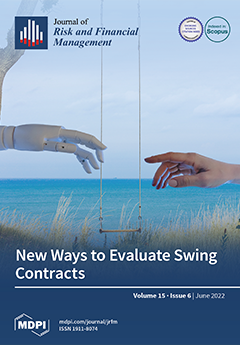Based on previous research addressing the use of principal component analysis (PCA) in modeling the dynamics of sovereign yield curves, in this paper, we investigate certain characteristics of the Romanian government bond market. We perform PCA on data between March 2019 and March
[...] Read more.
Based on previous research addressing the use of principal component analysis (PCA) in modeling the dynamics of sovereign yield curves, in this paper, we investigate certain characteristics of the Romanian government bond market. We perform PCA on data between March 2019 and March 2022, with emphasis on periods marked by extreme market stress, such as the outbreak of the COVID-19 pandemic in March 2020 or the Russian military invasion in Ukraine in February 2022. We find that on 25 March 2022, the first principal component explained 80.83% of the yield curve changes, the first two 91.92%, and the first three 96.87%, consistent with previous results from the literature, which state that the first three PCs generally explain around 95% of the variability in the term structure. In addition, we observe that principal components’ coefficients (
factor loadings) at 2 years were lower than those at 10 years, suggesting that in case of market sell-offs, yields at 10 years increase more than those at 2 years, leading to yield curve
steepenings. Interestingly, we observe that the explanatory power of the first PC increases significantly following extreme market events, when interest rates’ movements tend to become more synchronized, leading to higher correlations between tenors. We also employ PCA to check for relative-value (RV) trading signals and to assess the historical plausibility of yield curve shocks. We found that while both
explanatory power and
shape plausibility were characteristics of the yield curve dynamics during the outbreak of the COVID-19 pandemic, the
magnitude of the market movement registered in mid-March 2020 was unlikely from a historical perspective. Finally, we use a forecasting model to derive the entire structure of the Romanian yield curve while also incorporating the trader’s view on a few benchmark yields.
Full article




